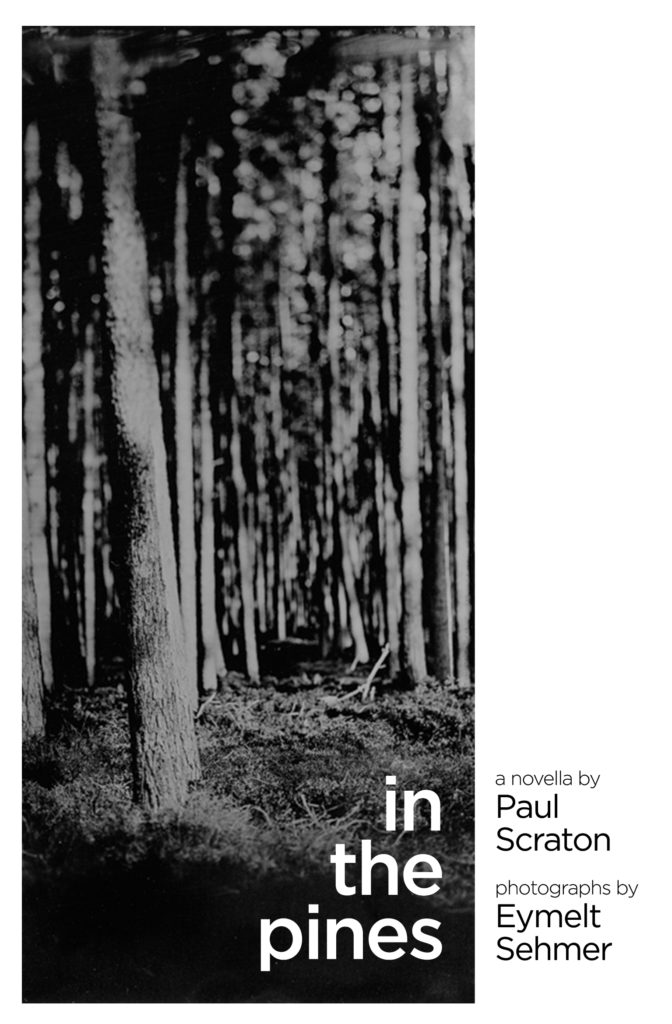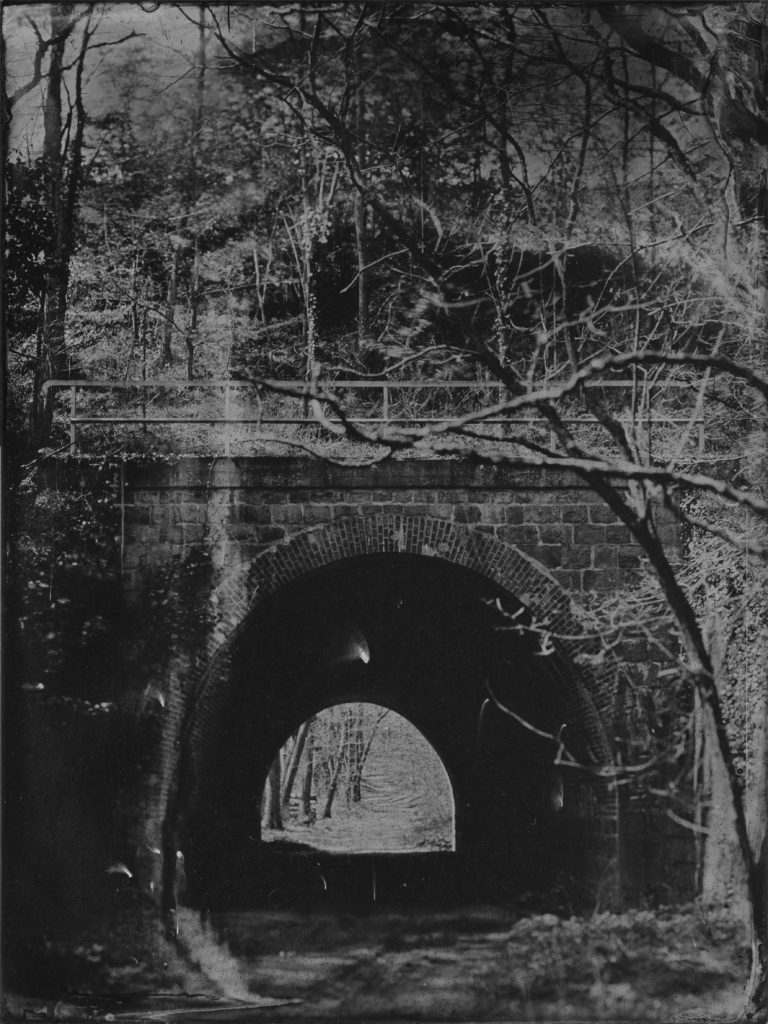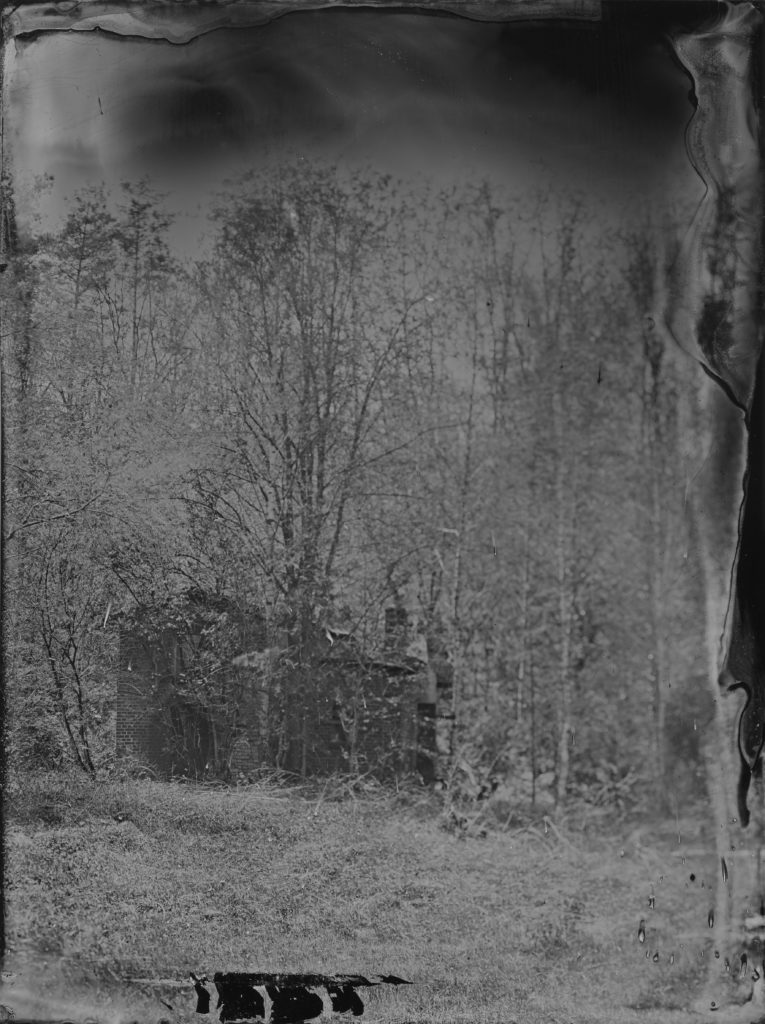An extract from Paul Scraton‘s novella ‘In the Pines’ — the story of an unnamed narrator’s lifelong relationship with the forest and the mysteries it contains — with photos by Eymelt Sehmer.

My mother, who enjoyed Rome far more than I ever did, used to say that ruins predict the future. They give us a sense of how the world, or a particular version of the world, will look after we’ve gone. Some ruins, made famous by artists and painters, have been collectively celebrated for their melancholy beauty as fallen artefacts from a lost civilisation, far longer than they were ever used for the purpose for which they were built.
There are architects who, in their idle moments, wonder how their greatest creations will turn out once the roof comes off and the walls begin to fall down. It must surely influence them in the moment they approach the drawing board.
This makes me uneasy, celebrating ruins for their looks alone. How can we celebrate abandoned places simply for their aesthetics, adding filters to our photographs before we post on our social media accounts, without properly understanding why a place became a ruin in the first place? War. Reformation. Family breakdown. Fire. Death. Bankruptcy. Economic crisis. Unemployment. Migration. Kingdoms crushed. Empires fallen. The story matters.

And yet, in the forest, I search them out. The old factory building where plants push up through gaps in the concrete and vines curl around rusting gate posts. An old sanitorium, where cracked tiles and elaborate pipe networks exposed to the elements remind us how futuristic the place once was. And deep in the forest, recognisable only to those who know what they are looking for, a pile of white stones that represent all that is left of a church that once stood at the heart of a village, whose name can still be found on maps.
Sometimes I see the day trippers, out from the city with their cameras and other equipment, climbing through holes in the fence at the old brewery or pushing through the brambles of the brick house by the railway. From the path, the house looks small. A signalman’s cottage, perhaps. But if you make your way through the tangle, you’ll soon see that what you thought was a cottage is simply an outhouse, that the main building stands behind, not quite hidden by the bushes and trees.
When we were young, the house was already abandoned, and those heading through the tunnel on their way to parties in the forest would quicken their step as they passed by, even if they never mentioned it to each other or spoke about why. I went that way myself. In the day. At dusk. With the first light of morning. But ruins didn’t scare me then and they don’t scare me now. I’d just like to know the story.
I search out some of the photographs online. Some are hyper realistic, and it’s possible to make out the texture of the peeling wallpaper and each individual splinter in a fallen beam. Others are in black and white. Others apply a filter, to make the photograph look old-fashioned, as if from another time or place. And yes, some of them try to provide a context for their images, for their Ruinenlust, by telling a story of this house by the railway tracks, even though there is no agreement as to what the story might be.
I don’t know either, and it annoys me.

It comes grudgingly, but I have to admit there is an attraction to these photographs that I find online, not dissimilar to how I feel when I explore the place in person. I too find the images beautiful in their decay, in how they remind us and how they offer up a warning. Still, I want to know. Who lived there? Why did they leave? Who owns the house now? Why has it been left to ruin?
The last time I was there, I found evidence of a gathering in one of the back rooms. Empty bottles and a small fire pit. It was winter, and there was a light dusting of snow on the ground. On the wall someone had painted a series of messages. Most were indecipherable to me. Perhaps I am too old. But there was one which was clear.
EXTINCTION IS COMING.
I sat down on the windowsill and looked out from the ruined house and into the forest. All the bottles at my feet were empty, and I hadn’t thought to bring one of my own.
*
‘In the Pines’ is out now, published by Influx Press. Buy a copy here (£8.36).